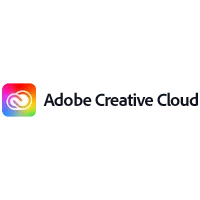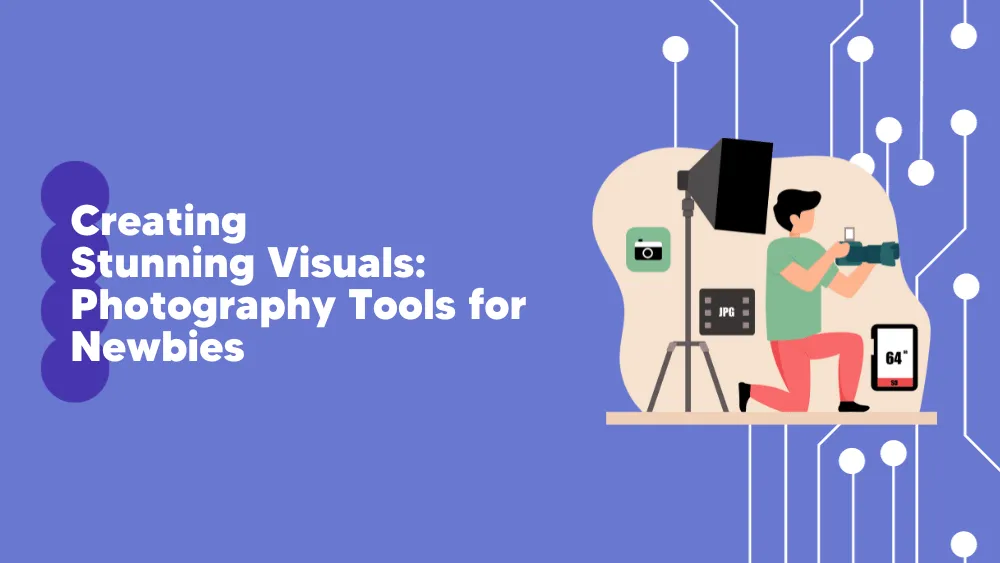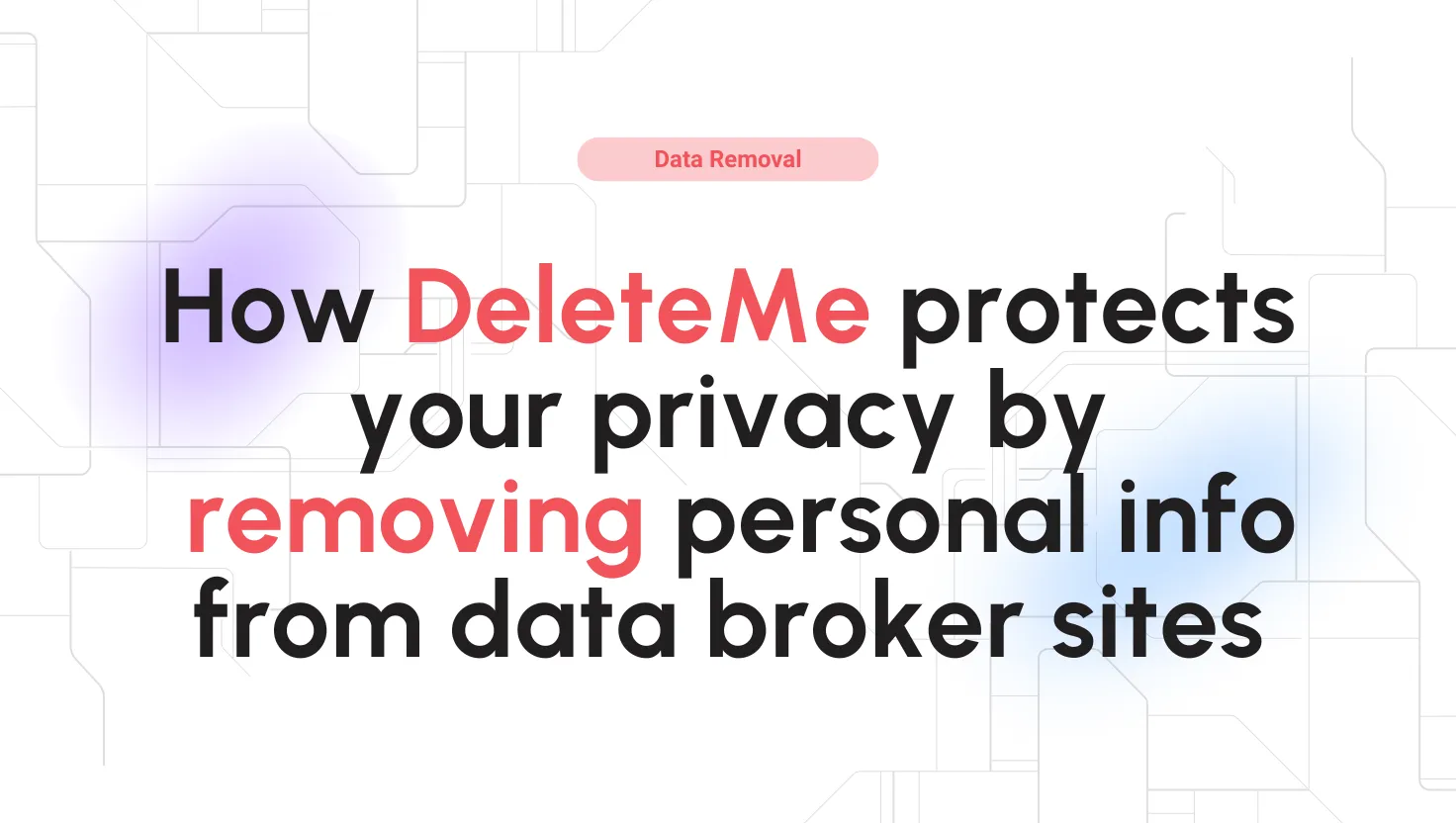
Adobe Creative Cloud Reviews for 2025
Save 40% on your SaaS stack with expert guidance
Free Consultation
What is Adobe Creative Cloud?
Creative professionals don’t rely on any single tool. Instead, they build a custom toolbox that gives them flexibility and reliability. This takes a lot of trial and error. Adobe realized a need to streamline this process and created — Adobe Creative Cloud. The Adobe app stock is best known for allowing users to edit images and videos. There is even the option to subscribe to Adobe Stock photos. Here’s my Adobe Creative Cloud review, so let’s pull back the curtain and see how well it works. Combines 20+ Adobe apps in one subscription, available for individuals and teams. All plans include access to:
- Behance — a community of professionals where you can showcase your work
- Adobe Creative Community — learning resources and tutorials
- Adobe Fonts — innate font library boasting thousands of fonts
- Creative Cloud Libraries — asset library accessible to all your CC apps
- Creative Cloud Market — design assets market, again with an “à la carte” model
Found in these Categories
Best For
- StartUps
- Freelancers
- Small Business
- Medium Business
- Large Enterprise
- Non-profit Organization
- Personal
Adobe Creative Cloud Pricing
Creative Cloud All Apps 100GB
For Individuals
Creative Cloud All Apps 100GB
For Students & Teachers
Creative Cloud for teams
For business
Looking to Save Time & Money
Audit, consolidate, and save—powered by our internal buying team. Let our experts analyze your current software stack and identify opportunities for cost savings and efficiency improvements.
- Stack Audit
- Cost Reduction
- Expert Team
Adobe Creative Cloud Features
- Blur
- Collaboration Tools
- Watermarking
- Text
- Search/Filter
- Redeye
- Real Time Editing
- Orientation
- Pre-built Templates
- Meme
- Lighting
- Image Library
- Content Import/Export
- Content Sharing
- Crop
- Drag & Drop
- File Management
- Enhance
Leave a Review
Adobe Creative Cloud Company Details
Company Name
Adobe
Headquarters
United States
Website
adobe.com
Own this Software?
Adobe Creative Cloud vs. Similar Products
Select up to 3 Software, to enable Comparison
Compare Selected SoftwareEditorial Review: Adobe Creative Cloud Deep Dive
Table of Contents
No Adobe Creative Cloud review is ever comprehensive due to the sheer size of Adobe Creative Cloud and the mutability of its components. However, the Adobe creative suite feels like a living, breathing world where one could spend a lifetime exploring it, making awesome content along the way.
Adobe Creative Cloud Subscription
Adobe Cloud apps are purchasable as “à la carte” subscription-based services. The exception is Adobe Stock, the digital asset repository, which has a subscription and requires that you pay for each asset you want to use. It can be added to any other app for a 30-day free trial, providing ten free monthly assets. Once a user of Adobe Creative Cloud, you can upgrade each app with storage, plugins, and assets. You are nudged and nagged to do so until you comply.
What can users do with this toolbox?
Creative Cloud users can produce creative content of any kind and in any Adobe file format. They can then export it globally, assured that it will perform as expected across all Adobe Creative Cloud instances. The first step is making an Adobe Creative Cloud account. After downloading the toolbox, please go through the Creative Cloud login process and download their apps.
Details of Adobe Creative Cloud Features
Now, let’s discover some of the features and benefits this toolbox can provide its users.
-
Quick 4-question quiz
Adobe offers a quick quiz that helps visitors discover the most appropriate app. Visit the Adobe home page, click “Creativity & Design,” click “What is Creative Cloud?” scroll down to “Get an app recommendation in about 60 seconds,” and click the blue “Start now” button.
The first question is which of the five areas you’re most interested in:- photos
- videos
- design
- illustration
The second question narrows down what kind of work you need to do in that area. The third asks how you like to learn, and the fourth if you’re an individual or a student/teacher. I clicked through the quizzes several times and discovered the two latter questions don’t matter — the recommendation is always based on the first two.
- Photos – the quiz will recommend Photoshop or Lightroom.
- Videos – it’s Premiere Pro, Animate, Audition, or After Effects.
- Design – it’s InDesign, Photoshop, Illustrator, or Adobe XD.
- Illustration – it’s Photoshop or Illustrator.
- For PDF, it’s always Acrobat Pro.
You can already spot a power imbalance with Adobe products — Photoshop is recommended in 3 categories.
-
Myriad apps
You can’t say something about Adobe, which is why they’re poor in apps. Because they are not. They offer a lot of apps that, in time, have become a statement in different operating areas.
-
Photos
Let’s see what apps you can use in this Creative Cloud for your photos.
-
Photoshop
Adobe flagship, and it shows. There is a cornucopia of effects that can turn any image into any other image; the only limit is how much time you spend polishing the chisel marks. In addition, you can apply some effects automatically, though they will probably look gnarly under scrutiny.
Photoshop is a raster image editor that works best on photographs and pixel-based graphics. In it, you can create and edit images, photos, and graphics on a desktop and iPad. In addition, there are free and paid Photoshop plugins that expand its capabilities, such as by giving it limited video-editing power.
Any image opened in Photoshop can be sliced into layers, with each layer independently edited. It’s a remarkable tool, though it can become a resource hog. Using it on a desktop machine with at least 16 GB RAM and an i7 processor is mandatory. The beefier your machine, the smoother the work.
-
Photoshop Lightroom
This one is an image tagging and processing program. You can edit batches of images by applying filters that correct colors and white balance, remove the red-eye effect, and so on. In addition, there is version control, saving the original image alongside the edited one in case the changes backfire. Three versions of Lightroom are Lightroom Classic CC, Lightroom Mobile, and Lightroom CC. The difference is which devices you’re using — Classic CC is for desktop devices, Mobile is for portable devices, and CC is for a balanced feature mix.
-
Photoshop Elements 2022
A standalone desktop app optimized for foolproof social media photo editing and sharing. Comes with 60 Guided Edits, a feature that streamlines making images look professional. Boasts Adobe Sensei AI, a machine-learning assistant that can assess images and automatically fix them by tilting eyes to look into the camera or smoothing out pimply faces.
This could be the best option for meme-makers and marketers. Available in a bundle with Premiere Elements 2022 as well. The bonus feature is sending prints and gifts right out of the app in the US.
-
Photoshop Express
A freemium mobile app with paid features touted as “photo magic at your fingertips.” Unfortunately, features have more to do with speed and accessibility than complexity. I tested the Android version on Samsung A51 and used low-quality JPGs. The effects are simple and may make the image look worse. In addition, the presentation is lackluster and makes the app seem cobbled together in the afternoon. The redeeming feature is Aspect Ratio — there are 30 presets, including a YouTube thumbnail, a Facebook ad, and an Instagram post.
-
Photoshop Camera
Another freemium mobile app designed for capturing and sharing photos. It has two gimmicks. The first is a collection of real-time photo camera lenses and filters. The second is that an AI recommends them. The A51, released in December 2019, is not compatible with the app, but inferior phones, such as S9, S9+, and Note9, released in 2018, are. There is no obvious pattern as to which phones are supported and why.
-
Videos
Even you’re videos are covered with Adobe.
-
Premiere Pro
This is the Photoshop of video and film editing. You can pull a staggering array of fonts, effects, audio files, and other assets in any format from any place, including the Adobe libraries, and insert them into the video. It supports up to 8K resolution, but performance during editing largely depends on the hardware.
I’m not saying you should get one of Linus Tech Tips’ goofy builds with two terabytes of RAM, but a substantially strong configuration is in order.
-
Premiere Elements 2022
A video equivalent of Photoshop Elements 2022. The method is a bit different, but the goal is to polish mediocre content into one that looks professional. Ready-made transitions, animations, and effects cover the imperfections, stitching video tidbits into a compelling visual story. Like Photoshop Elements 2022, this app is designed to ease complete amateurs into editing rather than provide total editing control.
-
After Effects
An app for motion graphics and visual effects. The primary function is masking janky parts of the footage. The more time you sink into After Effects, the smoother the look of your work, provided you can handle the UI. As with all video editing software, it’s resource-hungry and may crash on slower machines.
-
Premiere Rush
A tool for creating and sharing online videos on desktop and mobile devices. Presets are the key here, as the features are trimmed down not to overwhelm the user. The target audience for this tool is YouTube editors who work with minimal resources and skills.
-
Design
Illustration? or Maybe some graphic design for your jobs?
-
illustrator
A vector-based illustrations and designs app. Photoshop is for editing photos; Illustrator is for editing art. Vector-based images are easily resized without creating jagged edges or losing details. There is a 7-day free trial for Illustrator.
-
InDesign
A page layout designer for print and digital media. It creates e-books, videos, slideshows, animations, and other eye-catchy content. Analytics are built into the tool to show how well your content performs.
-
InCopy
A middle-ground tool for copywriters and designers. The feature set focuses on meshing text with graphics because copywriters use one set of tools and designers.
-
Animate
A 2D animation editor, best used for giving life and depth to an otherwise flat artistic presentation. It’s decent for making video games and cartoon environments, with the option to create interactive works, such as responsive web banners.
Substance 3D Collection is a set of tools for creating and rendering 3D scenes, and Substance 3D Texturing is a set of tools for creating and painting 3D materials.
-
Acrobat Pro DC
A professional PDF editor. “DC” means “document cloud” to let users know it uses online storage and a SaaS payment model. A light version called “Standard DC” doesn’t have access to advanced features, such as document comparison and one-click document creation.
The full feature list sounds fantastical and makes me think a marketing intern at Adobe got hold of the keyboard one day and went wild. One claimed feature is turning scanned documents into searchable and editable texts with fonts matching the original font (!). OCR can turn scanned documents into text files, but so far, I haven’t found a service that identifies fonts from images, and I don’t think Acrobat Pro DC can do it either.
I think the program has a dozen generic replacement fonts, using the closest match to the font you uploaded. Since the feature is barely used, nobody challenges it; even if they did, Adobe politely asks them to stop talking about it.
-
Adobe Stock
An asset library is where you pay to subscribe for each separate asset, such as image, video, illustration, or audio. Each month, your account is entitled to some free assets, which roll over as you renew your subscription up to a certain limit that depends on the plan purchased. That’s the simple part, but now it gets byzantine. People can purchase each asset for its dollar price, but some require credits, bought through and used only on Adobe Stock.
There are also two types of licenses for assets: standard and extended. The former cannot be used commercially on physical items, but the latter can. In some contexts, the Adobe Stock web page uses the words “enhanced license,” which I assume refers to the extended one. If not, there are three or even more license types.
-
Other
- Adobe Experience Manager is a tool for managers to handle customized content. A DAM (digital asset management) system and a CMS (content management system) rolled into one. In short, managers who don’t understand art can ensure it always ends up in the right hands. Documents can be shuttled through this tool, with e-signatures integrated from start to finish. In addition, automation and smart tools cut down on repetitive tasks, lowering the chance of mistakes or burnout.
- Adobe XD is a design UX tool for creating interfaces and graphical frameworks. People can design web graphics, mobile application interfaces, branding materials, and video games.
- Dreamweaver is a website development tool with on-the-fly coding. Optimized for quick rather than intricate website development with customizable templates and an asset funnel from Adobe Stock.
- Audition is for audio recording, mixing, and restoration, known as “non-destructive editing.” However, an Audition is not for composing new sounds or music. Best used with a video editing suite.
-
De facto image-editing standard
Adobe Creative Cloud has become a part of social consciousness to the point one of its apps is synonymous with editing images. Pointing out an edited image is as easy as saying it was “photoshopped.” By the way, Adobe does not appreciate this usage of the Photoshop name, but what can the company do — politely ask you to stop?
-
Adobe can act like a bully
Adobe’s business plan is to attract people to a walled garden using freebies and then bully them for more money through various schemes. While inside, the visitor is subject to many of Adobe’s micromanaging rules.
Section 5.2 of Adobe’s General Terms of Use states that inactive user accounts may be closed at Adobe’s sole discretion. However, this “does not apply to paid accounts in good standing.” Unfortunately, there is no definition of inactivity or good standing, giving Adobe unlimited power to do whatever it pleases to any of its users or their accounts.
The real gem is in section 11.2 (D), where Adobe reserves the right to ban users who have “repeatedly made complaints in bad faith” and keep doing so after Adobe politely asks them to stop. This clause appears designed to squelch people sharing bad experiences with Adobe over social media.
It’s not an empty threat because trying to leave Adobe’s walled garden can be a problem — anecdotal reports mention that files/projects can be a hassle to export en masse. Skimming the pricing plans, I also noticed paying a fee to cancel your subscription. In addition, there are 21 additional Terms of Use related to a facet of Adobe’s business.
-
Processing multiple files is a pain
App Store reviews are a haven from the 11.2 (D) clause. In the Apple App Store, user NavWombat left a Creative Cloud review in 2020, complaining about not doing actions on multiple files on an iPad, adding that this has been a consistent issue with Creative Cloud. For example, deleting or duplicating multiple files generates an error in accessing their options. In addition, files added to the Creative Cloud would not sync unless the window was forced to refresh. In short, “a lot of confusion and redundancy.”
Adobe Creative Cloud Integrations detailed
You can bring in outside apps if the Creative Cloud feature set isn’t enough. There is an Adobe API and a development toolkit to make your plugin or integration. For those who lack patience, Adobe offers a marketplace with paid plugins.
Adobe Creative Cloud Review Conclusions
It’s hard to resist the pull of Adobe Creative Cloud, mainly because of Photoshop and Premiere Pro. The two have a superb level of polish, providing unparalleled control over the photo and video materials. However, what makes me hesitant to recommend outright Adobe Creative Cloud is that Adobe seems to want the same amount of control over its users.
Photoshop and Premiere Pro are tightly integrated with Adobe Creative Cloud; once you’re in it, there’s no getting out. You’re getting into a lopsided relationship, so you might be trapped if you don’t have an exit plan. Investing oneself professionally into Photoshop or Premiere Pro only to have it all taken away because of a bug, glitchy update, or subscription renewal is a sheer tragedy.
Adobe Stock is another example of how poorly Adobe treats its users. Of course, content creators can demand any price and set restrictions on their content. So Adobe had to develop a scheme that would entice creators to join the platform and stay on it. Still, Adobe considered its interests and those of content creators; users are in a distant third place. If you have the willpower to abandon your year-long work and investment at a moment’s notice, do try out Adobe Creative Cloud. For everyone else, I’d rather recommend they keep trying out tools to create a custom toolbox where they’ll be in control.







